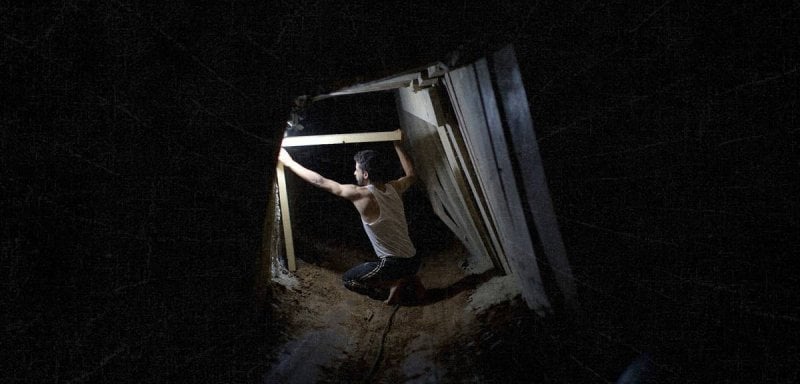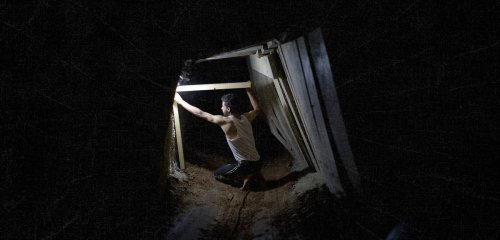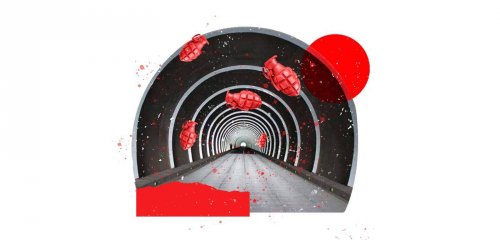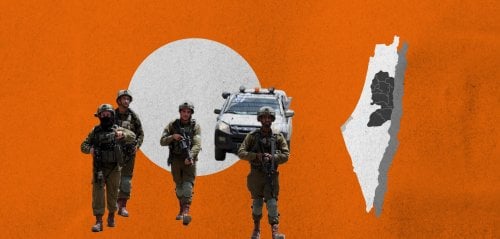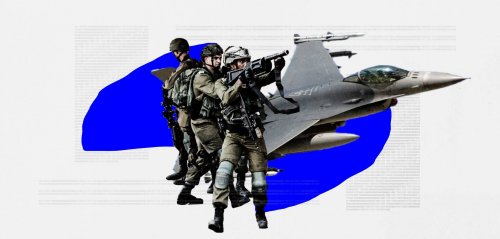In the aftermath of operation "Al-Aqsa Storm", Israeli airstrikes haven't relented, targeting Palestinian territories with missiles that destroy people's homes and bring them down on top of their heads, leaving a trail of destruction in their wake. These bombings spare no one, leveling homes of isolated civilians and places of worship, including mosques and churches, as well as clinics. Simultaneously, attempts at a limited ground invasion and prospects of a prolonged war are being delayed for a variety of reasons.
Israel, despite its relentless bombing campaigns and the destruction they've wrought in northern Gaza and parts of the West Bank, remains poised for what's often referred to as a "ground invasion" through the mobilization of reserve forces and Western support, both in terms of political and moral backing as well as financial aid and the supply of weaponry. The United States, in particular, stands as a significant pillar of support for Israel, both financially and morally, with a level of backing that surpasses what Israel received even during the 1973 war. This in addition to the two American warships that have arrived on the shores of Israel to bolster its military efforts. Although the Israelis have not officially disclosed the nature of the ground invasion of Gaza, its plan, or the even timing of its execution, the world is watching with bated breath to see what unfolds.
From the Vietcong to "Gaza Metro"
The 'Palestinian resistance', with all its factions, lacks the advanced American weaponry that the Israelis wield, which they employ to devastating effect. However, they've spent years preparing for this moment of confrontation. Over time, they've honed a unique weapon that remains in their arsenal and evolves with each conflict, uprising, or whenever the Israeli occupation tightens its grip on the Gaza Strip. This weapon is the underground tunnel network, or as Israel dubs it, the "Gaza Metro".
The concept of the tunnels is by no means a result of the current war; they've been around for nearly forty years. Israel discovered the first tunnel in 1983, albeit these tunnels had been limited in scale at the time.
The concept of the tunnels is by no means a result of the current war; they've been around for nearly forty years. Israel discovered the first tunnel in 1983, albeit these tunnels had been limited in scale at the time. Israel attempted to destroy them, fearing the transport of arms to the resistance through these underground networks. Security expert Khaled Akasha once mentioned in an interview that the Palestinian resistance drew inspiration for the tunnel concept from the "Vietcong tunnels", which were dug by fighters of the National Front for the Liberation of South Vietnam during the American-Vietnamese War.
A lifeline.. and a battlefront
During times of relative calm, these tunnels serve as a vital lifeline, providing the Gaza Strip with essential supplies such as food, fuel, and goods for its beseiged residents. Akasha previously emphasized that tunnel excavation and digging has become highly lucrative work for those involved. In some cases, entire families in Gaza have turned tunnel digging into a family profession, earning significant income by engaging in the smuggling of goods or participating in tunnel construction.
Hamas, in particular, has established an extensive network of tunnels beneath the Gaza Strip, in preparation for what lies ahead. Tunnel construction efforts have intensified since 2005. Initially employed for smuggling arms, these underground passages have evolved to facilitate the transport of goods, fuel, and commodities from Sinai to Gaza, particularly during periods of blockade and seige.
In the years following that, Hamas has strategically harnessed approximately 2,500 tunnels that run between Gaza and Egypt for the secret transport of goods, fuel, and fighters. These same tunnels had previously enabled the fighters to infiltrate Israel and carry out the kidnapping of Israeli soldier Gilad Shalit in 2006, an incident that involved the deaths of two other Israeli soldiers. An analysis conducted by the Begin-Sadat Center for Strategic Studies at Tel Aviv University highlights that these tunnels proved pivotal, enabling Palestinians to target and kill 11 Israeli soldiers in three separate attacks during 2014.
The Egyptian army began destroying these tunnels in late 2013 during their campaign against what they termed "terrorist operations" in the Sinai Governorate. These very same tunnels also served as escape routes for several Hamas prisoners from Egyptian jails during the January 25, 2011 revolution, after the opening of the prisons, according to media reports.
Offensive, defensive and logistical uses
Some accounts indicate that some tunnels are so large, that they have the capacity to accommodate trucks fully laden with goods being driven through them. This fact was illustrated by images presented by Egyptian media during the period when these tunnels were being destroyed.
Israeli military forces have previously attempted to destroy these tunnels, particularly in 2021, but air strikes only managed to affect 100 kilometers of the network. Hamas then announced that the total length of these tunnels exceeded 500 kilometers
These Gaza tunnels are categorized into three types:
1- Offensive tunnels used by Palestinian factions for launching attacks on Israel, and are most probably rigged with booby traps by Hamas in preparation for an Israeli ground invasion. They represent a strategic weapon for Hamas.
2- Defensive tunnels positioned within Palestinian territories, where militants can move away from the prying eyes of the Israelis and their airstrikes.
3- Logistic tunnels, used as command centers for planning and directing operations, monitoring the progress of battles, coordinating fighters, and keeping hostages and equipment.
Presently, Israelis are unable to ascertain the exact number or length of these tunnels, but they believe they extend about 41 kilometers in length and 10 kilometers in width beneath Gaza. Israeli forces have tried to neutralize and destroy these tunnels in the past, especially in 2021, but their aerial bombardments only affected about 100 kilometers of them. Hamas then declared that the total length of these tunnels exceeded 500 kilometers.
Why have they endured for all these years?
According to documentaries by Arab stations and reports from international channels, several key factors have contributed to the continual presence and effectiveness of these tunnels throughout these years:
- First, Hamas has mastered the construction of these tunnels over the years, through practical experience. What began as rudimentary tunnels created with simple tools to transport basic necessities has slowly evolved into sophisticated, organized underground structures. These networks now offer amenities for the occupants who spend extended periods within them. They are equipped with electricity, railway lines, and are reinforced with concrete, making them more resilient to damage than those previously constructed with sandy materials. Additionally, these tunnels are branched, intricate and intertwined like a maze, with concealed entry points. Recently, they have been enhanced with modern communication and surveillance technologies.
- Secondly, Another pivotal reason is the absolute secrecy maintained regarding the layouts of these tunnels, which is no less important than the first reason. Even if a fighter or a member of the resistance knew the routes or entrances to one or two tunnels, he likely doesn't know the full extent of the network's layout. This secret knowledge is retained by a select few leaders.
- Third, the element of expertise has been cultivated and passed down over the decades, contributing significantly to the continued effectiveness of these tunnels as a weapon.
If the ground invasion Israel is speaking of becomes a reality, no one knows how it will end or when, and will undoubtedly be a protracted battle. Because of these tunnels, it will be a battle where Israeli forces will be facing unseen fighters
According to a report produced by Sky News Arabia, there are two possible methods Israel might employ to attempt the destruction of the tunnels in its coming war:
1- The use of "bunker-buster" bombs (GBU) that penetrate deep into the ground before detonating. These bombs weigh 2,291 kilograms and are filled with 286 kilograms of explosives. They are equipped with guidance and precision targeting systems and are dropped from military aircraft. However, employing this method would lead to massacres and massive casualties because many Gazans are unwilling to leave their land in the northern regions.
2- Relying on satellite imagery. This approach would not be effective as tunnel entrances are often situated near civilian structures like houses and mosques.
New tunnels... and weapons?
If the ground invasion Israel is speaking of becomes a reality, no one knows how it will end or when. It will undoubtedly be a protracted battle. Because of these tunnels, it will be a battle where Israeli forces will be facing invisible fighters, a testament to the lengths Hamas has gone to perfect the art of tunnel warfare. These fighters have trained rigorously over decades, well-prepared for the war on their own land and home turf.
Added to this is the likelihood that Hamas might possess new weapons. Fabian Hinz, a missile expert at the International Institute for Strategic Studies, suggests that "it is highly possible that Hamas may possess capabilities we have not seen before, but we may only discover them later.
Raseef22 is a not for profit entity. Our focus is on quality journalism. Every contribution to the NasRaseef membership goes directly towards journalism production. We stand independent, not accepting corporate sponsorships, sponsored content or political funding.
Support our mission to keep Raseef22 available to all readers by clicking here!
Interested in writing with us? Check our pitch process here!
